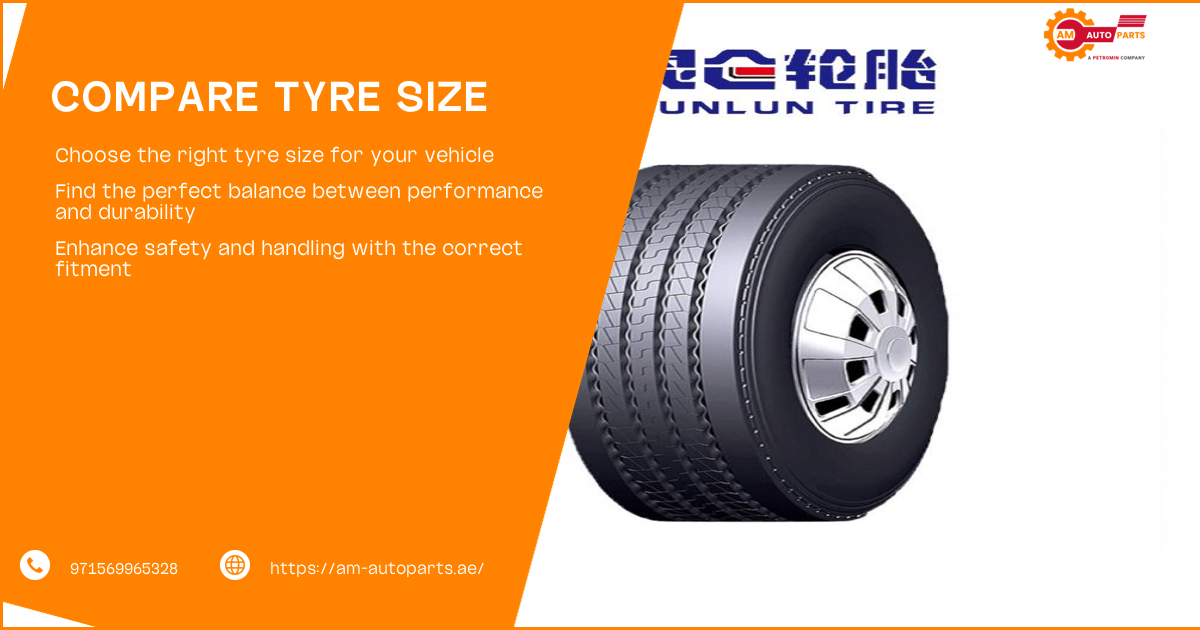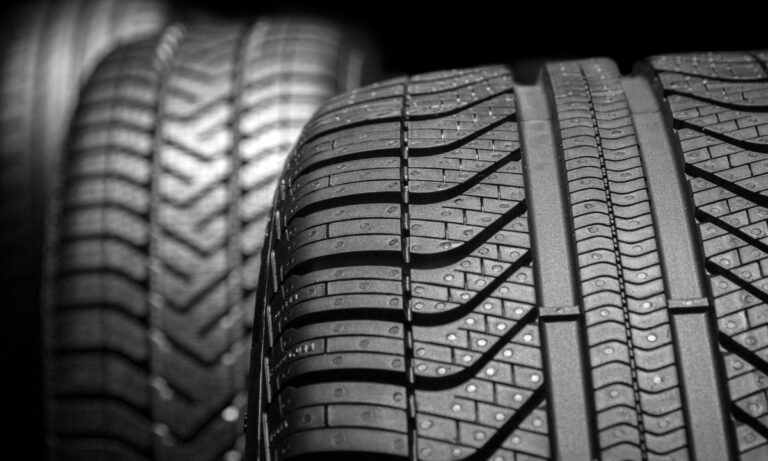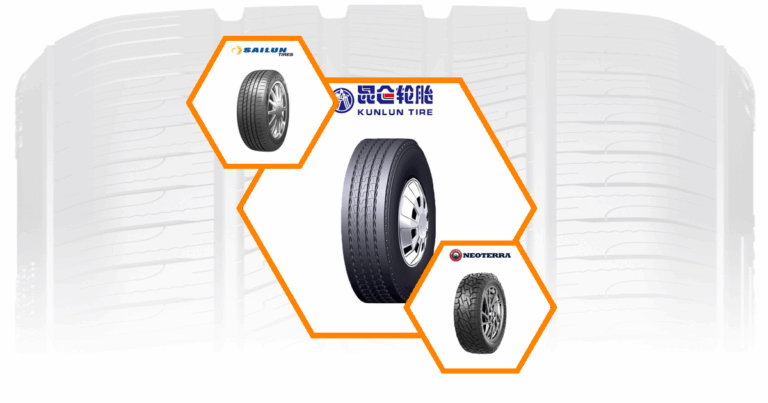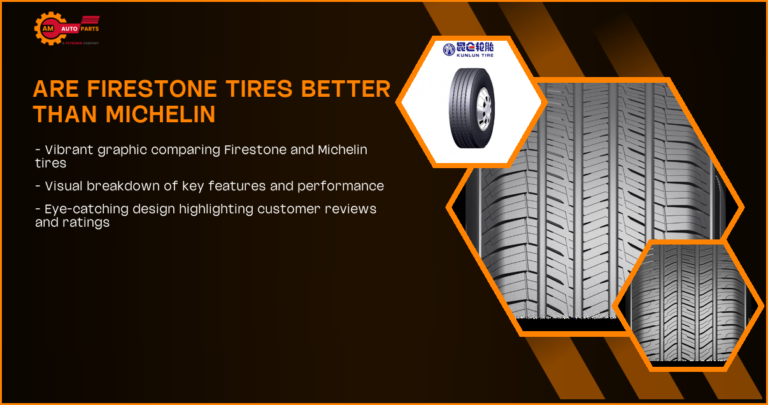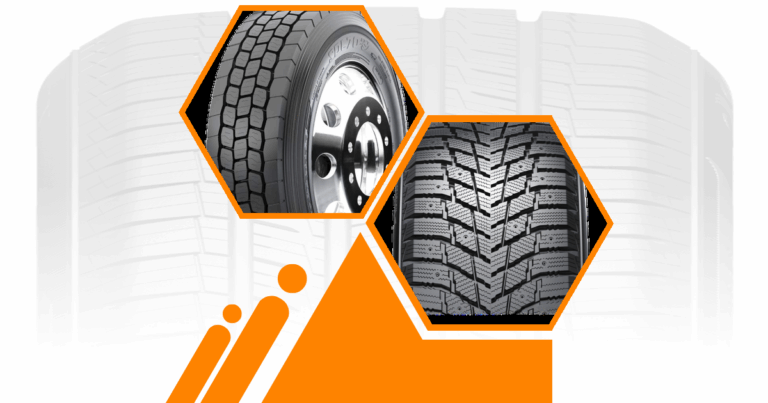Compare Tire Size: A Comprehensive Guide
When it comes to vehicle maintenance and performance, understanding tire sizes is crucial. Whether you’re looking to enhance your car’s performance, improve fuel efficiency, or simply change the aesthetics, comparing tire sizes can make a significant difference. This guide will walk you through everything you need to know about tire sizes, from understanding tire size codes to the impact on vehicle performance.
How to Compare Tire Sizes
Understanding Tire Size Codes
Tire size codes are a series of numbers and letters found on the sidewall of your tire. These codes provide essential information about the tire’s dimensions and capabilities. For example, a tire size code like 225/50R17 indicates the tire’s width, aspect ratio, and wheel diameter. Understanding these codes is the first step in comparing tire sizes effectively.
- Width : The first number (225) represents the tire’s width in millimeters.
- Aspect Ratio : The second number (50) is the aspect ratio, which is the height of the tire’s sidewall as a percentage of the width.
- Wheel Diameter : The letter ‘R’ stands for radial construction, and the number (17) is the wheel diameter in inches.
Using Tire Size Comparison Charts
Tire size comparison charts are valuable tools that allow you to see how different tire sizes compare in terms of width, aspect ratio, and diameter. These charts can help you visualize the differences and make informed decisions about which tire size is best for your vehicle.
- Visual Comparison : Charts provide a side-by-side comparison of different tire sizes.
- Quick Reference : Easily find compatible tire sizes for your vehicle.
- Performance Insights : Understand how changes in tire size can affect performance.
Utilizing Online Tire Size Calculators
Online tire size calculators are convenient tools that allow you to input your current tire size and compare it with potential alternatives. These calculators provide detailed information about the differences in diameter, circumference, and revolutions per mile.
- User-Friendly : Input your current and desired tire sizes for instant results.
- Detailed Analysis : Get information on diameter, circumference, and speedometer impact.
- Compatibility Check : Ensure the new tire size fits your vehicle’s specifications.
Why Compare Tire Sizes?
Performance Impact
Changing tire sizes can significantly impact your vehicle’s performance. Larger tires may improve traction and handling, while smaller tires can enhance acceleration. Understanding these effects is crucial for making the right choice.
- Traction : Larger tires offer better grip on the road.
- Handling : Wider tires can improve cornering stability.
- Acceleration : Smaller tires may enhance acceleration due to reduced weight.
Fuel Efficiency Considerations
Tire size can also affect your vehicle’s fuel efficiency. Larger tires may increase rolling resistance, leading to higher fuel consumption. Conversely, smaller tires can improve fuel economy by reducing resistance.
- Rolling Resistance : Larger tires increase resistance, reducing fuel efficiency.
- Fuel Economy : Smaller tires can improve mileage by reducing drag.
- Cost Savings : Improved fuel efficiency can lead to long-term savings.
Vehicle Aesthetics
The size of your tires can dramatically change the look of your vehicle. Larger tires can give your car a more aggressive stance, while smaller tires may offer a sleek, streamlined appearance.
- Aggressive Look : Larger tires enhance the vehicle’s presence.
- Streamlined Appearance : Smaller tires offer a more subtle look.
- Customization : Choose tire sizes that match your style preferences.
Tire Size Comparison Charts by Wheel Diameter
13″ to 18″ Wheel Diameter Charts
For vehicles with smaller wheel diameters, tire size comparison charts can help you find the perfect fit. These charts provide a range of options for each wheel size, allowing you to choose the best tire for your needs.
| Wheel Diameter | Tire Size Options |
| 13″ | 155/80R13, 175/70R13 |
| 14″ | 185/65R14, 195/60R14 |
| 15″ | 195/65R15, 205/60R15 |
| 16″ | 205/55R16, 215/60R16 |
| 17″ | 225/50R17, 235/45R17 |
| 18″ | 235/40R18, 245/45R18 |
19″ to 24″ Wheel Diameter Charts
For larger wheel diameters, these charts offer a variety of tire sizes to suit different performance and aesthetic preferences.
| Wheel Diameter | Tire Size Options |
| 19″ | 245/40R19, 255/35R19 |
| 20″ | 255/35R20, 265/30R20 |
| 21″ | 265/30R21, 275/35R21 |
| 22″ | 285/30R22, 295/25R22 |
| 23″ | 305/25R23, 315/30R23 |
| 24″ | 315/30R24, 325/25R24 |
26″ to 30″ Wheel Diameter Charts
For those seeking the ultimate in customization, these charts provide options for the largest wheel diameters.
| Wheel Diameter | Tire Size Options |
| 26″ | 325/30R26, 335/25R26 |
| 28″ | 345/25R28, 355/30R28 |
| 30″ | 365/30R30, 375/25R30 |
Metric vs. Imperial Tire Size Comparison
Converting Between Metric and Imperial Measurements
Converting tire sizes between metric and imperial systems can be confusing, but it’s essential for accurate comparisons. Understanding the conversion process ensures you select the right tire size for your vehicle.
- Metric to Imperial : Convert millimeters to inches for width and diameter.
- Imperial to Metric : Convert inches to millimeters for accurate comparisons.
- Conversion Tools : Use online converters for quick and accurate results.
Pros and Cons of Each System
Both metric and imperial systems have their advantages and disadvantages. Understanding these can help you decide which system to use when comparing tire sizes.
- Metric System : Offers precise measurements, widely used globally.
- Imperial System : Familiar to many in the U.S., easier for some to visualize.
- Preference : Choose the system that aligns with your needs and location.
Factors to Consider When Comparing Tire Sizes
Aspect Ratio and Sidewall Height
The aspect ratio and sidewall height of a tire affect its performance and comfort. A lower aspect ratio can improve handling, while a higher ratio may offer a smoother ride.
- Handling : Lower aspect ratios enhance cornering performance.
- Comfort : Higher sidewalls provide a cushioned ride.
- Balance : Find the right balance for your driving style.
Section Width and Overall Diameter
The section width and overall diameter of a tire influence its fit and performance. Wider tires can improve traction, while larger diameters may affect speedometer accuracy.
- Traction : Wider tires offer better grip on various surfaces.
- Fit : Ensure the tire fits within the wheel well.
- Speedometer : Larger diameters may require speedometer recalibration.
Load Index and Speed Rating
The load index and speed rating of a tire determine its capacity and performance limits. Choosing the right specifications ensures safety and optimal performance.
- Capacity : Load index indicates the maximum weight a tire can support.
- Performance : Speed rating shows the maximum speed a tire can handle.
- Safety : Select tires that meet or exceed your vehicle’s requirements.
How Does Tire Size Affect Vehicle Performance?
Acceleration and Braking
Tire size can significantly impact your vehicle’s acceleration and braking capabilities. Smaller tires may improve acceleration, while larger tires can enhance braking performance.
- Acceleration : Smaller tires reduce weight, improving acceleration.
- Braking : Larger tires increase contact area, enhancing braking.
- Balance : Choose a size that complements your driving needs.
Handling and Stability
The size of your tires affects your vehicle’s handling and stability. Wider tires can improve cornering, while larger diameters may affect stability at high speeds.
- Cornering : Wider tires offer better grip during turns.
- Stability : Larger diameters can impact high-speed stability.
- Control : Select tires that provide the desired level of control.
Fuel Economy Impact
Tire size can also influence your vehicle’s fuel economy. Larger tires may increase rolling resistance, leading to higher fuel consumption.
- Resistance : Larger tires increase rolling resistance, reducing efficiency.
- Economy : Smaller tires can improve fuel economy by reducing drag.
- Savings : Consider the long-term cost benefits of improved efficiency.
Common Tire Size Comparison Scenarios
Upsizing vs. Downsizing
When comparing tire sizes, you may consider upsizing or downsizing. Each option has its benefits and drawbacks, depending on your goals.
- Upsizing : Larger tires can improve aesthetics and performance.
- Downsizing : Smaller tires may enhance fuel efficiency and acceleration.
- Decision : Choose based on your priorities and vehicle capabilities.
Winter vs. Summer Tire Sizes
Different seasons may require different tire sizes for optimal performance. Winter tires often have a higher aspect ratio for better traction in snow, while summer tires may be wider for improved grip on dry roads.
- Winter Tires : Higher aspect ratios for better snow traction.
- Summer Tires : Wider profiles for enhanced dry-road grip.
- Seasonal Needs : Select tires that match the seasonal conditions.
Off-Road vs. Street Tire Sizes
Off-road and street tires have different size requirements to meet their specific performance needs. Off-road tires may be larger and more robust, while street tires focus on comfort and efficiency.
- Off-Road Tires : Larger sizes for better ground clearance and durability.
- Street Tires : Focus on comfort and fuel efficiency.
- Purpose : Choose tires that suit your driving environment.
Tire Size Comparison for Popular Vehicle Types
Passenger Cars
Passenger cars often have a wide range of tire size options to balance performance, comfort, and efficiency. Choosing the right size can enhance your driving experience.
- Balance : Find a size that offers a mix of comfort and performance.
- Efficiency : Consider fuel economy when selecting tire sizes.
- Comfort : Ensure the tire size provides a smooth ride.
SUVs and Crossovers
SUVs and crossovers require tire sizes that support their larger frames and off-road capabilities. Selecting the right size can improve traction and stability.
- Traction : Choose sizes that enhance off-road performance.
- Stability : Ensure the tire size supports the vehicle’s weight.
- Versatility : Select tires that perform well in various conditions.
Trucks and Commercial Vehicles
Trucks and commercial vehicles need tire sizes that can handle heavy loads and demanding conditions. The right size ensures safety and efficiency.
- Load Capacity : Select sizes that support heavy loads.
- Durability : Choose tires that withstand tough conditions.
- Safety : Ensure the tire size meets safety standards.
The Impact of Tire Size on Speedometer Readings
Calculating Speedometer Error
Calculating speedometer error involves comparing the original tire size with the new size. This calculation helps determine the discrepancy in speed readings.
- Comparison : Measure the difference in diameter between old and new tires.
- Discrepancy : Calculate the percentage error in speed readings.
- Adjustment : Use the calculation to adjust speedometer settings.
Correcting Speedometer for New Tire Sizes
Correcting the speedometer for new tire sizes ensures accurate speed readings. This process may involve recalibration or using a correction device.
- Recalibration : Adjust the speedometer to match the new tire size.
- Devices : Use correction devices for precise adjustments.
- Accuracy : Ensure speedometer readings are accurate for safety.
Tire Size Comparison for Performance Upgrades
Increasing Tire Width for Better Traction
Increasing tire width can enhance traction and grip, improving performance in various driving conditions. Wider tires offer a larger contact patch with the road.
- Grip : Wider tires provide better traction on different surfaces.
- Performance : Improved grip enhances overall vehicle performance.
- Considerations : Ensure the wider tires fit within the wheel well.
Changing Aspect Ratio for Improved Handling
Changing the aspect ratio can improve handling and cornering performance. A lower aspect ratio reduces sidewall flex, enhancing stability.
- Stability : Lower aspect ratios improve cornering stability.
- Handling : Enhanced handling for a more responsive drive.
- Balance : Find the right aspect ratio for your driving style.
Legal Considerations When Changing Tire Sizes
DOT Regulations
The Department of Transportation (DOT) has regulations regarding tire sizes to ensure safety and performance. Compliance with these regulations is essential.
- Safety : DOT regulations ensure tire safety standards.
- Compliance : Ensure new tire sizes meet DOT requirements.
- Inspection : Regularly inspect tires for compliance and safety.
State-Specific Laws
Different states may have specific laws regarding tire sizes and modifications. Understanding these laws is crucial to avoid legal issues. Tire rotation guide helps you move your car tires to different positions so they wear evenly and last longer Firestone automotive tires are strong rubber wheels for cars and trucks They help vehicles drive smoothly and safely on different roads
Sailun tires China makes car tires that are good quality and affordable Many people choose Firestone versus competitors Firestone makes good tires that last long while other tire brands might not be as durable or reliable for your car
Tire warning illuminated The Firestone tire lineup offers many types of tires for different vehicles You can find tires for cars trucks and SUVs in the
UAE tyre leaders are top companies in the United Arab Emirates that make and sell tires for cars trucks and other vehicles They are known for providing high-quality tires to customers across the country and beyond Optimal UAE EV tires are special wheels made for electric cars in the United Arab Emirates These tires help electric vehicles drive better in hot desert conditions and save more energy
Dubai vehicle maintenance is important to keep cars running smoothly in the hot desert climate Regular Tire inspection techniques Look closely at your tires to check for wear and damage use a penny to measure tread depth and check tire pressure with a gauge
Top UAE SUV rubber offers strong and durable tires for big cars in the United Arab Emirates These special tires help SUVs drive smoothly on both city roads and desert sand
- Variations : State laws may vary regarding tire modifications.
- Research : Check local laws before changing tire sizes.
- Compliance : Ensure your vehicle meets state-specific requirements.
Tire Size Comparison Statistics
According to the National Highway Traffic Safety Administration (NHTSA), improper tire size is a contributing factor in 12% of tire-related crashes.
This statistic highlights the importance of choosing the correct tire size for your vehicle. Ensuring compatibility can prevent accidents and enhance safety.
The Environmental Protection Agency (EPA) reports that a 10% increase in rolling resistance can lead to a 1-2% decrease in fuel economy.
This finding underscores the impact of tire size on fuel efficiency. Selecting the right size can improve fuel economy and reduce environmental impact.
By understanding and comparing tire sizes, you can make informed decisions that enhance your vehicle’s performance, safety, and efficiency. Whether you’re considering a performance upgrade or simply need a replacement, this guide provides the insights you need to choose the right tire size for your needs.
Frequently Asked Questions (FAQs)
What is the difference between 225/50R17 and 235/45R17 tires?
The primary difference between 225/50R17 and 235/45R17 tires lies in their width and aspect ratio. The 235/45R17 tire is wider and has a lower aspect ratio, which can improve handling and stability. However, it may also affect fuel efficiency and ride comfort.
How do I know if a different tire size will fit my car?
To determine if a different tire size will fit your car, consult your vehicle’s manual or a tire professional. They can provide guidance on compatible sizes based on your car’s specifications. Additionally, online tools and charts can help you visualize potential options.
Can I use a tire with a different aspect ratio on my vehicle?
Using a tire with a different aspect ratio is possible, but it may affect your vehicle’s performance and handling. A lower aspect ratio can improve cornering, while a higher ratio may offer a smoother ride. It’s essential to ensure the new size is compatible with your vehicle.
What happens if I use the wrong tire size on my car?
Using the wrong tire size can lead to several issues, including inaccurate speedometer readings and compromised handling. It may also affect your vehicle’s safety and fuel efficiency. Always ensure the tire size is compatible with your car’s specifications.
How does tire size affect speedometer accuracy?
Tire size directly impacts speedometer accuracy, as larger tires can cause the speedometer to read lower than the actual speed. Conversely, smaller tires may result in a higher reading. Recalibrating the speedometer can correct these discrepancies.
